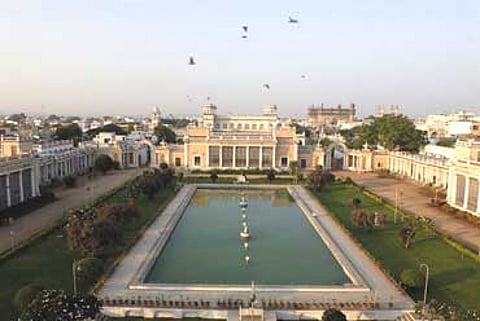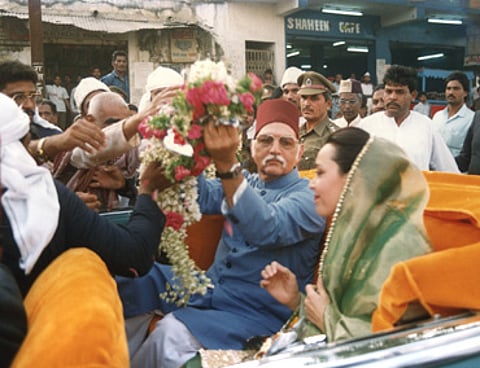For over three centuries, the Nizam's ancestors had ruled a state the size of Italy and could claim the allegiance of some 15 million subjects. Nor was his reputation limited just to India: during the years leading up to World War II, the Nizam was also regarded by many as the leading Muslim ruler in the world. A few years earlier, in 1921, the Nizam's two sons had been sent to Nice where they married the daughter and the niece of the last Caliph of Turkey, Abdul Majid II. As part of the marriage arrangements, the Caliph had nominated the Nizam's son as heir to the Caliphate, so uniting the supreme spiritual authority of the Muslim world with its greatest concentration of riches. The dynasty seemed unassailable.
The disintegration of the state of Hyderabad and the dispersal of the wealth of its Nizams is one of 20th century's most dramatic reversals of fortunes. Mukarram Jah, who succeeded his grandfather Osman Ali Khan in February 1967, quickly found himself enmeshed in financial chaos. He had inherited a ridiculously inflated army of retainers: 14,718 staff and dependents, including no less than 42 of his grandfather's concubines and their 100-plus offspring. The Chowmahalla palace complex alone had 6,000 employees; there were around 3,000 Arab bodyguards and 38 people whose only job was to dust the chandeliers; several others were retained specifically to grind the Nizam's walnuts.
For all the rococo Once - Upon - A - Time - There - Was - A - Princess - Who - Lived - In - A -Huge - Palace quality of the Nizam's world, by 1967, everything was in a state of severe disarray: the Nizam's garages, for example, cost £45,000 a year to keep in petrol and spare parts for 60 cars, yet only four vehicles were in working condition, and the limousine supposed to take the Nizam from his coronation broke down on the way to the reception.
Most debilitating of all was the legal wrangling initiated by the several thousand descendants of the different Nizams who claimed part of Jah's inheritance: by 1973, 476 legal heirs of the sixth Nizam and 1,945 descendants of the fifth had filed suits or claims of various sorts. Even getting the smallest sum to live on proved difficult for the new Nizam: his vast inheritance had been distributed between 54 different trusts, the control of which were disputed. So, despite nominally inheriting one of the world's greatest fortunes, he was forced to sell jewellery and other family heirlooms to keep solvent.
Eventually, in 1973, frustrated and disgusted by the weight of litigation and the bitterness of the family infighting, Jah took off from Hyderabad, and relocated to a sheep farm in Perth, Australia. There, His Exalted Highness spent his days tinkering under the bonnets of his cars, or driving bulldozers and heavy earth-moving equipment around the Australian bush. In his absence, Jah's unsupervised Hyderabad properties were looted and his possessions dispersed by a succession of incompetent or dishonest advisors.
Many palaces were sealed by orders of different courts. Those which weren't were quietly sold off or encroached upon: between 1967 and 2001, the Chowmahalla shrunk from 54 acres to 12, as courtyard after courtyard, ballrooms and whole stable blocks, and even the famous mile-long banqueting hall, were all acquired by real estate developers, who demolished the 18th century buildings and erected concrete apartments in their place.
In 1997, when I first visited Hyderabad in the course of the research for my book White Mughals, the loot of the Nizam's property was nearly complete. One day I visited the huge Victorian pile of the Falaknuma Palace, just to the south of the city. The entire complex, which lay above the town on its own Acropolis, was empty and semi-ruinous, with every window and doorway sealed by red wax. Wiping the windows, I could see cobwebs the size of bedsheets hanging from the corners of the rooms. The skeletons of outsized Victorian sofas and armchairs lay dotted around the parquet floors, their chintz entirely eaten away by white ants, so that all that remained were the wooden frame and the springs.

